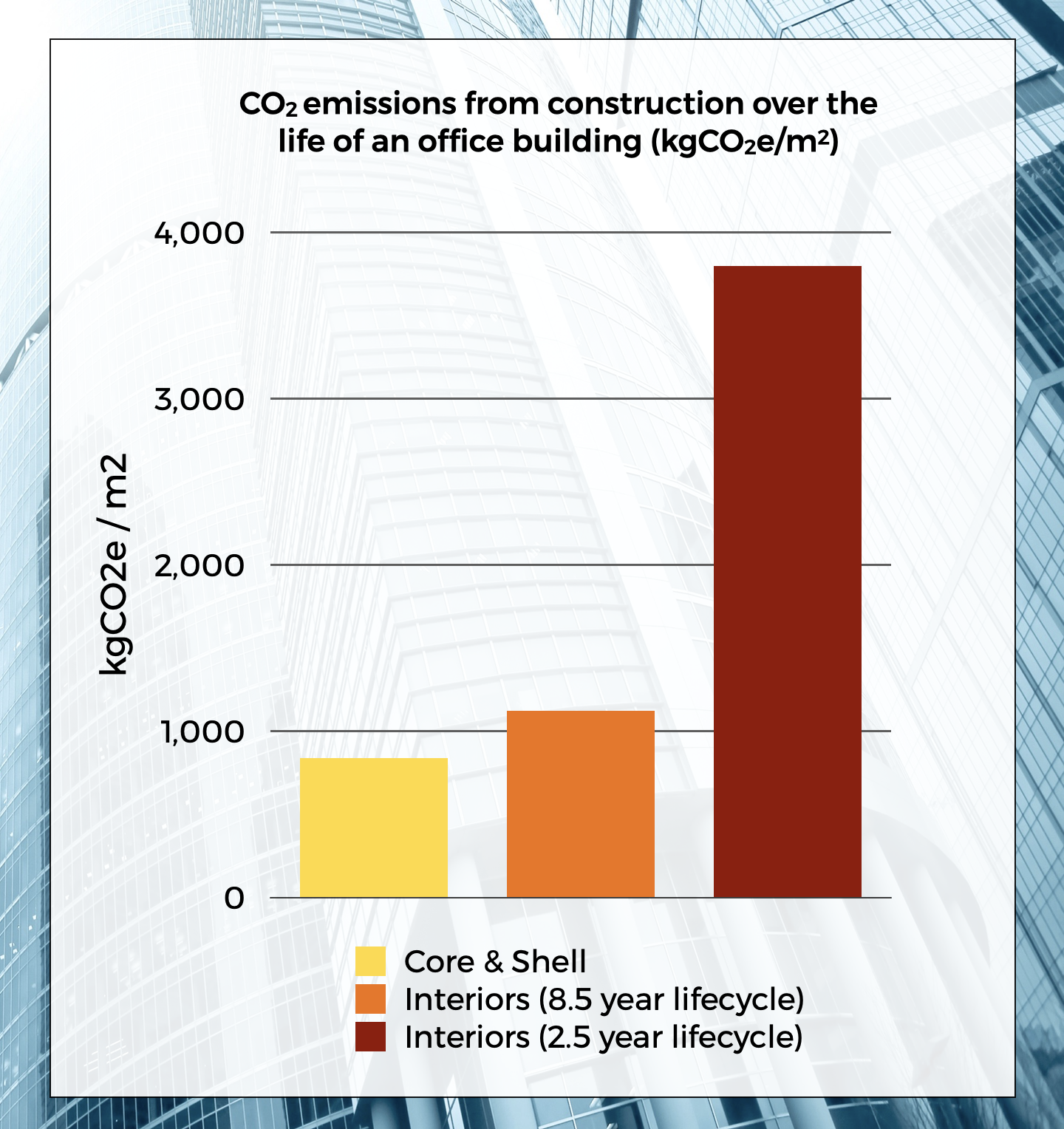
I remember working on my first carbon neutral project in 2007 - the transformation of an old post office into a 27 room boutique hotel. Starting out, our goals were ambitious - nothing less than total carbon neutrality (embodied and operational).
Although we did complete the first hotel in the world to achieve operational carbon neutrality, our ambitions for embodied carbon were quickly thwarted by the advice of an expert.
“Forget the embodied carbon of interiors, it’s insignificant. Core & shell is what you need to focus on.”
Unfortunately, I took the advice and 15 years later, I continue to regret it.
Watching the sheer volume of old materials getting stripped out of the project and new material going back in I remember thinking at the time, “How does this make any sense? How can the carbon footprint of all this stuff be less than core & shell?”
Over the years that followed the narrative remained consistent: “Forget the carbon footprint of interior fit-out. It’s not worth tracking when compared to core & shell.” Intuitively, it never made sense.
In 2008, we began developing data sets to figure out the embodied impact of interiors. Like many others, we quickly realized that interiors were infinitely more complex than core & shell. For the latter, the bulk of embodied carbon can be figured out from 4 key materials: concrete, steel, glass and aluminum. For interiors, 10-20 times that number of materials are required.
Today, most interior RESET projects evaluate between 50 and 200 products, depending on the material boundary. With many of the data gaps having been filled, the carbon footprint of office interiors hovers around 190kg of CO2 per square meter as per data from RESET projects. Compare that to roughly 840kg of CO2 for the core and shell of office towers.
That’s pretty simple math. With those numbers, if an office interior gets demolished and rebuilt more than 4 times over the life of the building, carbon emissions from interiors are greater than core & shell. That’s not insignificant.
Considering an average lifespan of 50 years for buildings and 8.5 years for interiors, office interiors are demolished and rebuilt 5.9 times over the life of buildings. That translates into carbon emissions from interiors being about 32% higher than core and shell.
Moreover, these numbers are getting worse. With instability in the real-estate market and the changing definition of workplace, tenants are looking for leases that are shorter and more flexible. In certain market sectors - such as rapidly growing tech companies - the average life of an office interior is about 2.5 years. In JLL’s Future of Work Survey for 2022, the top 2 take-aways focused on an increase in interior fit-out driven by 1) need for office rejuvenation due to hybrid working and 2) the focus on improving the quality of existing space as opposed to expanding.
Case in point - at the time of writing our team is reviewing the submittal of an office several thousand square meters in size whose previous interior fit-out lasted only 2 years.
Recalculating carbon emissions for an average fit-out life of 2.5 years translates into carbon emissions from interior construction being 350% higher than core and shell.

It’s time to stop dismissing the impact of interior fit-out. It’s never been less than core & shell, it’s simply been more difficult to calculate. The RESET Embodied Standard for Interiors is changing that.
On the surface of things, the immediate solution might be to renovate office interiors less frequently. Yet, when companies are rapidly changing by growing, shrinking or adapting to new workplace requirements, stretching the life of an office is easier said than done.
The key to reducing carbon emissions from interior fit-out lies in circularity, both in terms of usage and end-of-life.
For more data and graphs on the above, as well as a case-study that leverages total circularity to reduce embodied carbon emissions up to 81.5%, download our case studies.
Embodied Carbon and Circularity for Office Interiors: Part 1
Embodied Carbon in Gee Office Interiors: Part 2 Case Study
Post Scriptum: We are currently repeating the research for the retail sector. Our initial figures show that carbon emissions from interior construction in this sector exceed that from offices. To learn more, join our newsletter or follow us on social media.